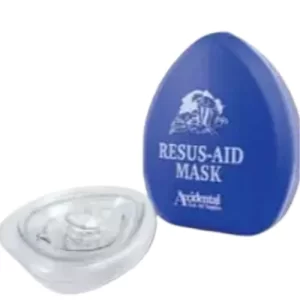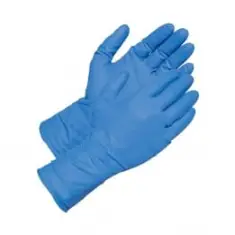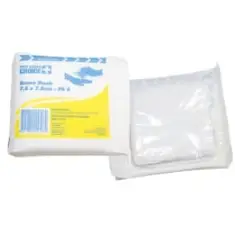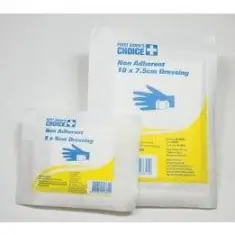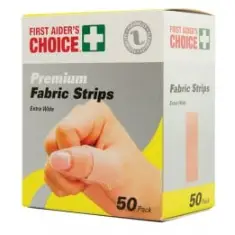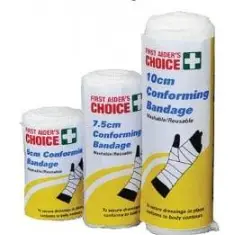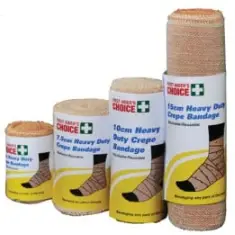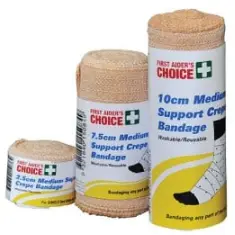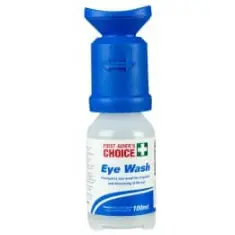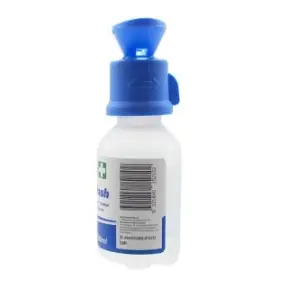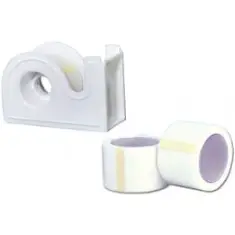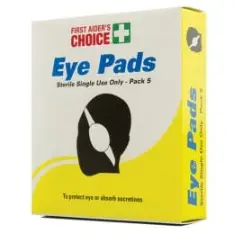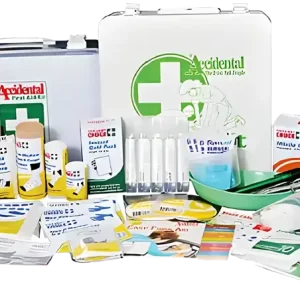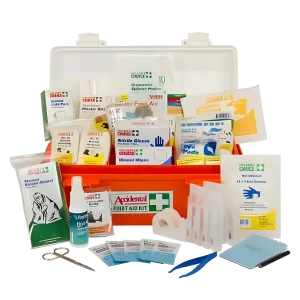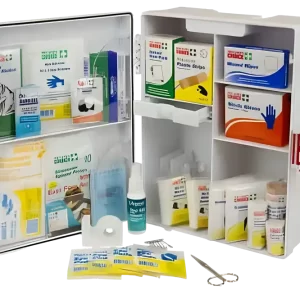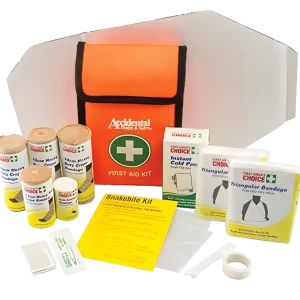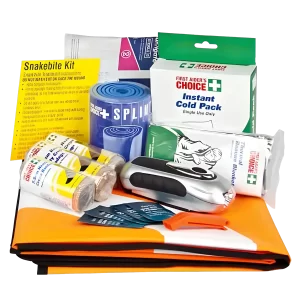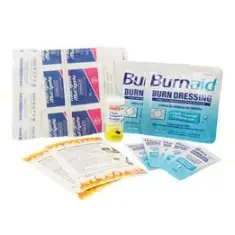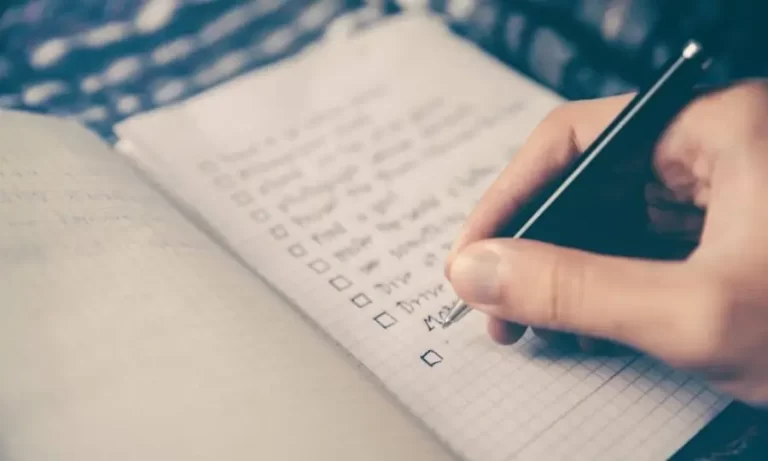First Aid Kit Checklist: Don’t Forget These Life-Saving Items
Updated 22/07/2024 We’re back baby and bigger and better than ever! We’ve included a checklist, added a table of contents for easier navigation. We’ve also included extra information on each item on the checklist.
Accidents and emergencies have a knack for sneaking up on us when we least expect them. That’s why having a well-equipped first aid kit is a game-changer. A first aid kit checklist is your best friend when it comes to being prepared!
Whether you’re at home, at work, or out exploring the great outdoors, having the right supplies within arm’s reach can make all the difference when it comes to providing immediate care. In this comprehensive guide, we’ll walk through the essential items you need in your first aid kit to ensure you’re ready for whatever life throws your way.
Customise your First Aid Kit Checklist
While we are going to give you a great checklist of first aid kit essentials, it’s important to recognize that a first aid kit is not a one size fits all situation. If you like to hike, snakebites might be a significant risk, if you work with chemicals, eye damage could be a risk. In a kitchen burns may be likely. So when choosing what you need take these risks into account.

The First Aid Code of Practice is a big help. This document offers helpful guidelines, especially if you are choosing for equipment for a workplace. Whether you’re an employer, an employee, or an individual looking for more specific information, the First Aid Code of Practice article provides detailed insights into the selection, maintenance, and use of first aid kits. It covers a wide range of industries and outlines the recommended contents based on the level of risk and the nature of the work performed. So, if you want to dive deeper into the topic or ensure compliance with safety regulations, we highly recommend learning about the code in our Quick and Easy guide to the First Aid Code of Practice.
It’s worth noting that Appendix E of the First Aid Code of Practice provides a comprehensive first aid kit checklist. While this list may vary slightly from state to state, it serves as an excellent general guide for most situations. If you’re looking for a hassle-free solution, we offer ready-made kits that are fully compliant with these guidelines. Check out our range of pre-packed, code-compliant first aid kits to ensure you’re always prepared.
Now, let’s dive into the essential items for your first aid kit:
Before we dive into the checklist, it’s important to understand why having a first aid kit is essential in various settings. Whether you’re a business owner, young professional or a busy parent, being prepared for emergencies is a responsible step toward ensuring the well-being of yourself and those around you. We are going to go through some essentials for a well stocked kit, but first, don’t forget this important reminder about choosing items:
The Checklist
What should be in a first aid kit? Here’s a comprehensive checklist of essential items based on the First Aid in the Workplace Code of Practice:
| Item | Quantity | Purpose |
|---|---|---|
| Instructions for providing first aid (including CPR flow chart) | 1 | Quick reference guide for emergency procedures |
| Note book and pen | 1 | Recording incident details and patient information |
| Resuscitation face mask or face shield | 1 | Safely performing mouth-to-mouth resuscitation |
| Disposable nitrile examination gloves | 5 pairs | Protecting against cross-contamination |
| Gauze pieces 7.5 x 7.5 cm, sterile (3 per pack) | 5 packs | Cleaning and dressing wounds |
| Saline (15 ml) | 8 | Cleaning wounds and irrigating eyes |
| Wound cleaning wipe (single 1% Cetrimide BP) | 10 | Disinfecting wounds |
| Adhesive dressing strips – plastic or fabric (packet of 50) | 1 | Covering small cuts and wounds |
| Splinter probes (single use, disposable) | 10 | Removing splinters safely |
| Tweezers/forceps | 1 | Removing foreign objects and applying dressings |
| Antiseptic liquid/spray (50 ml) | 1 | Disinfecting wounds and surrounding skin |
| Non-adherent wound dressing/pad 5 x 5 cm (small) | 6 | Covering and protecting small wounds |
| Non-adherent wound dressing/pad 7.5 x 10 cm (medium) | 3 | Covering and protecting medium-sized wounds |
| Non-adherent wound dressing/pad 10 x 10 cm (large) | 1 | Covering and protecting large wounds |
| Conforming cotton bandage, 5 cm width | 3 | Holding dressings in place and providing support |
| Conforming cotton bandage, 7.5 cm width | 3 | Holding dressings in place and providing support |
| Crepe bandage 10 cm (for serious bleeding and pressure application) | 1 | Applying pressure to control bleeding |
| Scissors | 1 | Cutting bandages, clothing, or tape |
| Non-stretch, hypoallergenic adhesive tape – 2.5 cm wide roll | 1 | Securing dressings and bandages |
| Safety pins (packet of 6) | 1 | Fastening bandages and slings |
| BPC wound dressings No. 14, medium | 1 | Treating medium-sized wounds |
| BPC wound dressings No. 15, large | 1 | Treating large wounds |
| Dressing – Combine Pad 9 x 20 cm | 1 | Absorbing blood and protecting large wounds |
| Plastic bags – clip seal | 1 | Disposing of contaminated items |
| Triangular bandage (calico or cotton minimum width 90 cm) | 2 | Creating slings and immobilizing limbs |
| Emergency rescue blanket for shock or hypothermia | 1 | Maintaining body temperature in emergencies |
| Eye pad (single use) | 4 | Protecting injured eyes |
| Access to 20 minutes of clean running water or hydrogel (3.5 gm sachets) | 5 sachets | Treating burns and chemical exposures |
| Instant ice pack | 1 | Treating sprains, strains, and bruises |
Remember, this checklist is a general guide based on the Code of Practice. Depending on your specific workplace or personal needs, you may need to add additional items or specialized modules. Always consult local regulations and consider any specific risks in your environment when assembling or updating your first aid kit.
Stay Prepared: Essential Instructions and Tools for Your First Aid Kit Checklist
Let’s break down further what should go in a first aid kit. Why does each item on the checklist matter?
1. Instructions for providing first aid, including CPR It’s essential to include step-by-step instructions for administering first aid, including cardiopulmonary resuscitation (CPR). These instructions act as a guide in emergency situations, providing you with the knowledge and confidence to perform life-saving techniques correctly. Be sure to include a clear and concise flow chart that outlines the necessary steps, ensuring that you’re prepared to act swiftly when seconds count. Don’t leave good CPR to your memory. Keep instructions on hand.
2. Notebook and pen A notebook and pen? Really? Yes. It’s important to document to keep yourself legally protected in the workplace, but in real life, its handy to write down information to pass on to the ambulance in lifethreatening emergencies. Don’t just think you’ll write it down on your phone, this is a handy tool in a stressful situation.
3: Resuscitation face mask
How do you feel about mouth to mouth resuscitation? Enter the resuscitation face mask, your trusty shield against germs and the awkwardness of traditional mouth-to-mouth resuscitation. No need to worry about the “ick” factor anymore! Having a mask ensures you can perform CPR confidently and safely, while keeping any potential diseases at bay. With this essential item in your first aid kit, you’ll be ready to save lives without risking those awkward moments.
4. Disposable nitrile examination gloves:
If you’ve ever had to bandage a serious bleed, you’ll know the importance of examination gloves! These super-powered gloves protect you from cross-contamination and keep those pesky germs at a safe distance. From tending to wounds to handling medical procedures, these gloves have got you covered. So, suit up and let your hands do the work while staying germ-free and ready for action.
5. Gauze pieces: The Versatile Sidekick for Wound Care!
Meet your trusty sidekick in wound care – the gauze pieces! Rather than mop up any bleeds with cotton buds that leave residue, gauze mops up bloody wounds with ease. With their versatility, they’re here to save the day in any sticky situation. Whether you need to clean a wound, apply pressure to control bleeding, or cover larger injuries, these gauze pieces have got you covered. They’re the unsung heroes of your first aid kit, providing comfort and protection to those in need.
- Non-adherent wound dressings: Comfort and Protection in One!
When it comes to wound care, non-adherent wound dressings are the unsung heroes. These gentle yet protective dressings provide comfort and shield wounds from external contaminants. With their non-stick surface, they ensure pain-free dressing changes, allowing wounds to heal without unnecessary discomfort. Whether it’s a minor cut or a more substantial injury, non-adherent wound dressings are your trusted allies in the healing process.
7 Wound cleaning wipes and Antiseptics
Wound cleaning wipes are your secret weapon against pesky germs. These wipes are infused with gentle yet effective cleansing solutions, fighting off potential infections while keeping wounds clean. Great for minor bleeds, or to clean up dirty tradies arms before you apply bandages.
8. Adhesive dressing strips: Reliable Support for Wound Dressings!
We love bandaids! And they come in all shapes and sizes. With their strong adhesive backing, they ensure that dressings stay intact, even during movement. These strips provide the confidence you seek, knowing that your wound dressings won’t shift or come loose. When it’s time to protect and cover wounds, adhesive dressing strips have got you covered.
9. Conforming cotton bandages: Versatile Support for Wound Dressings!
You may have seen these small conforming bandage rolls in your first aid kit. What are they for? They are conforming, so are handy for keeping eyepatches in place, or small non adhesive pads. With their flexibility and ability to conform to different body parts, they ensure a snug fit!
10 Crepe bandage: Reliable Pressure Application for Serious Bleeding!
When it comes to serious bleeding and pressure application, the crepe bandage takes the spotlight. This reliable bandage is designed to provide the necessary compression and support in critical situations. With its wider width and stretchable properties, it’s the go-to bandage for addressing significant bleeding or immobilizing injuries. Including a crepe bandage in your first aid kit ensures that you’re prepared to handle emergencies with confidence.
11. Safety pins: Secure and Convenient Fastening!
When you need to secure bandages and slings, safety pins come to the rescue. These handy fasteners provide a secure and convenient way to keep everything in place.
12. Scissors: A good pair of scissors is an indispensable tool in any first aid kit. These aren’t your everyday craft scissors – look for a pair specifically designed for first aid use. Ideally, they should have a blunt, rounded tip to prevent accidental injury when cutting close to the skin. The blades should be sharp enough to cut through tough materials like clothing or bandages easily. In an emergency, you might need to quickly remove clothing to access an injury, and scissors allow you to do this safely without moving the patient unnecessarily. They’re also crucial for cutting bandages and dressings to size, trimming adhesive tape, or even cutting a ring off a swollen finger if necessary. Some first aid scissors, known as tuff cuts, are specifically designed to easily cut through tough materials like seat belts or leather. When choosing scissors for your kit, look for a durable, rust-resistant pair. Remember to clean and dry them after each use to keep them in good condition.
13. Tweezers: Tweezers are another small but mighty tool in your first aid arsenal. Their primary use is for removing foreign objects from the skin, such as splinters, small pieces of glass, or insect stingers. Having a good pair of tweezers means you can remove these objects cleanly and precisely, reducing the risk of infection or further injury. When dealing with splinters or other embedded objects, tweezers allow you to grasp and remove the object without pushing it further into the skin. They’re also useful for handling small items like ticks, where direct contact with your fingers might be risky. In some cases, tweezers can be used to help apply small dressings in hard-to-reach areas. When selecting tweezers for your first aid kit, choose a pair with fine, pointed tips for precision, but not so sharp as to cause injury. Stainless steel tweezers are a good choice as they’re durable and easy to sterilize. Remember to clean your tweezers thoroughly after each use.
14. Disposable ice packs: Disposable ice packs are a valuable addition to any first aid kit, particularly for treating soft tissue injuries. These single-use packs typically contain chemicals that, when activated (usually by squeezing or shaking the pack), produce an endothermic reaction, making the pack cold. They’re incredibly convenient because they don’t require pre-freezing and are always ready for immediate use. Ice packs are crucial in the initial treatment of sprains, strains, bumps, and bruises. The cold helps to reduce swelling and inflammation by constricting blood vessels, and it can also help to numb the area, providing pain relief. When using an ice pack, remember the RICE protocol: Rest, Ice, Compression, and Elevation. Never apply an ice pack directly to the skin – always wrap it in a cloth or towel to prevent skin damage. Apply for no more than 20 minutes at a time, with at least 2 hours between applications. Include several of these in your kit, as they’re single-use and you might need more than one for a significant injury.
15. Thermal blanket: Also known as a space blanket or emergency blanket, a thermal blanket is a thin, lightweight sheet made from heat-reflective plastic sheeting. Despite its simple appearance, it’s a powerful tool for maintaining body temperature in emergency situations. The primary purpose of a thermal blanket is to prevent or treat shock by reducing heat loss from the body. It reflects up to 90% of radiated body heat back to the person, helping to keep them warm in cold conditions. In hot conditions, it can also be used to provide shade or reflect heat away from a person. Thermal blankets are waterproof and windproof, providing additional protection from the elements. They’re incredibly compact when folded, taking up minimal space in your kit, but can unfold to cover an adult fully. In addition to their primary use, thermal blankets can serve as improvised signaling devices in rescue situations due to their reflective surface. Every first aid kit should contain at least one thermal blanket, and it’s wise to include more if you’re preparing a kit for outdoor activities or multiple people.
16. Saline solution: Saline solution is a sterile mixture of salt and water that closely matches the salt concentration in the body’s cells. In a first aid context, it’s primarily used for cleaning wounds and irrigating eyes. For wound cleaning, saline solution is ideal because it doesn’t damage tissue or cause stinging like some antiseptics can. It effectively helps to remove dirt, debris, or foreign objects from wounds without introducing harmful chemicals. In eye injuries, saline can be used to flush out foreign particles or chemicals. It’s gentle enough to use in the eyes without causing further irritation. Saline solution usually comes in small, single-use pods or bottles to maintain sterility. When using it to clean a wound, you can pour it directly over the wound to irrigate it, or use it to moisten sterile gauze for gentle cleaning. For eye irrigation, tilt the irrigation, tilt the affected person’s head to the side, gently pull the eyelid open, and pour the saline solution across the eye from the nose outward. This helps flush any contaminants away from the tear duct. Include several single-use saline pods in your kit, as they’re useful for a variety of situations and don’t expire quickly.
17. Adhesive tape: Adhesive tape, also known as medical tape or surgical tape, is a versatile tool in any first aid kit. Its primary purpose is to secure dressings and bandages in place, ensuring they stay where they’re needed. There are several types of adhesive tape available, including cloth tape, paper tape, and waterproof plastic tape. Cloth tape is strong and flexible, making it good for securing larger dressings or providing support. Paper tape is gentler on the skin and is a good choice for those with sensitive skin or for use on delicate areas. Waterproof tape is useful for dressings that need to stay in place during bathing or in damp conditions. When applying tape, be sure to smooth it down firmly to ensure good adhesion, but be careful not to stretch it too tightly, which could restrict circulation. To remove tape, peel it off slowly in the direction of hair growth to minimize discomfort. Always include a roll of adhesive tape in your kit, and consider having multiple types for different situations.
18. Triangular bandages: Triangular bandages are large, triangular-shaped pieces of cloth that are incredibly versatile in first aid situations. Their primary uses are as slings to support injured arms or shoulders, and as broad bandages to hold dressings in place on larger wounds. To use as a sling, place one end of the bandage over the shoulder on the uninjured side, drape it across the chest, and use it to support the injured arm, tying the ends behind the neck. Triangular bandages can also be folded into narrow strips to use as makeshift bindings or to secure splints. In extreme situations, they can even be used as improvised tourniquets. Because of their multiple uses, it’s a good idea to include at least two triangular bandages in your first aid kit. Look for bandages made of strong, absorbent material that’s easy to fold and tie.
19. Plastic bags: Plastic bags serve several important purposes in a first aid kit. Their primary use is for the safe disposal of contaminated materials such as used dressings, gloves, or aprons. This helps to contain any biohazardous waste and prevent the spread of infection. Choose strong, sealable bags that won’t easily tear or leak. In addition to waste disposal, plastic bags can be used to create makeshift ice packs by filling them with ice or cold water. They can also be used to keep dressings dry when bathing, or to protect the first aid kit contents from moisture in damp environments. In extreme situations, a large plastic bag can even be used as an improvised chest seal for certain types of chest wounds. Include several sizes of plastic bags in your kit for different purposes.
20. Eye pad: An eye pad is a specialized dressing designed specifically for eye injuries. It’s typically a soft, sterile pad shaped to fit comfortably over the eye area. The main purpose of an eye pad is to protect an injured eye from further damage and to absorb any discharge. It can be used for a variety of eye injuries, including minor scratches, small foreign objects in the eye, or after eye medication has been applied. When using an eye pad, it should be secured gently in place with a conforming bandage or surgical tape, being careful not to put pressure on the eyeball itself. It’s important to note that in cases of embedded objects in the eye, an eye pad should be placed over the uninjured eye to prevent sympathetic movement of the injured eye. Always include several sterile, individually wrapped eye pads in your first aid kit.
21. Instant cold pack: An instant ice pack is a single-use cold compress that doesn’t require pre-freezing. These packs typically contain water and ammonium nitrate separated by a thin membrane. When the pack is squeezed, the membrane breaks, allowing the contents to mix, creating an endothermic reaction that makes the pack cold. Instant ice packs are invaluable for treating soft tissue injuries like sprains, strains, and bruises. The cold helps to reduce swelling, inflammation, and pain by constricting blood vessels and slowing nerve impulses. They’re particularly useful in situations where traditional ice packs aren’t available, such as outdoor activities or workplace environments. When using an instant ice pack, always wrap it in a cloth or towel to prevent skin damage, and apply for no more than 20 minutes at a time. Include at least one instant ice pack in your kit, more if you’re preparing for sports or high-risk activities.
Get a compliant Kit
We hope this list has helped you get a picture of what you need, but if you want to make things easy we’ve got a great range of kits, ready to go with items from the checklist ready to go. Here are some of our code of practice compliant kits.
First Aid Kit Modules
In addition to the basic items, the First Aid Code of Practice recommends additional first aid kit contents including specific modules for certain work environments or activities. These modules are designed to address particular risks and provide specialized care. Let’s explore these modules in detail:
Outdoor Module
The outdoor module is designed for work performed outside where there’s a risk of insect or plant stings, or snake bites. This module is particularly important for workers in industries such as agriculture, forestry, landscaping, and outdoor recreation.
Items in this module include:
- Heavy-duty 10 cm crepe bandage for snake bites: This wide, stretchable bandage is crucial for applying the pressure-immobilization technique in case of snake bites. The technique involves wrapping the entire limb firmly to slow the spread of venom through the lymphatic system. The bandage should be applied over clothing if possible, starting from the bite site and working up the limb.
- Sting relief cream, gel, or spray: These products typically contain ingredients like hydrocortisone, lidocaine, or benzocaine to relieve pain and itching from insect stings and plant irritations. They can provide quick relief for bee stings, wasp stings, mosquito bites, and encounters with plants like stinging nettles.
Example scenarios where this module would be beneficial:
- A team of surveyors working in bushland areas
- Landscapers maintaining large outdoor spaces
- Tour guides leading nature walks
- Farmers working in fields or orchards
Remote Module
The remote module is designed for people working in locations far from immediate medical help. This could include workers in industries such as mining, oil and gas, remote construction, or scientific field research.
Items in this module include:
- Heavy-duty 10 cm crepe bandage for snake bites: As in the outdoor module, this is crucial for managing snake bites in remote areas where medical help may be hours away.
- Large clean sheeting for covering burns: In case of significant burns, clean sheeting can be used to cover the burned area, protecting it from contamination and helping to prevent shock.
- Thermal blanket for treating shock: Also known as a space blanket, this helps maintain body temperature in shock victims or in extreme weather conditions.
- Whistle for attracting attention: In remote areas, a whistle can be a lifesaver, allowing workers to signal for help over long distances or in low-visibility conditions.
- Torch/flashlight: Essential for providing light in emergency situations, especially in areas without reliable power sources or during night-time emergencies.
Example scenarios where this module would be beneficial:
- Geologists conducting surveys in remote desert areas
- Oil rig workers on offshore platforms
- Conservation researchers in dense jungle environments
- Remote telecommunications tower maintenance crews
Burn Module
The burn module is designed for workplaces where there’s a significant risk of burns. This could include industries such as welding, cooking or chemical manufacturing.
Items in this module include:
- Burn treatment instructions on two waterproof instruction cards: One card should be kept in the first aid kit, while the other should be located near the emergency shower or water supply. These cards provide clear, step-by-step instructions for treating burns, which can be crucial in high-stress situations.
- Hydrogel (8 x 3.5 gram sachets): Hydrogel is a water-based gel that helps cool and soothe burns. It can provide pain relief and help prevent further tissue damage.
- Hydrogel dressings: These specialized dressings are impregnated with hydrogel, providing a cooling effect while also protecting the burn from contamination.
- Clean polythene sheets in small, medium, and large sizes: These can be used to cover large burn areas, helping to prevent infection and reduce pain caused by air moving over the burned skin.
- 7.5 cm cotton conforming bandage: This can be used to hold dressings in place over burned areas without applying direct pressure to the burn.
Example scenarios where this module would be beneficial:
- Commercial kitchen staff in restaurants
- Welders in manufacturing plants
- Laboratory technicians working with corrosive chemicals
- Firefighters and other emergency responders
Remember, the contents of these modules may need to be adjusted based on specific workplace risks and relevant state regulations. It’s always a good idea to consult with a medical professional or a workplace safety expert when assembling specialized first aid modules.
By including these modules in your first aid kit when appropriate, you’re taking proactive steps to address specific risks in your work environment. This level of preparedness can make a significant difference in managing emergencies effectively and potentially saving lives.
Get what you need for your kit!
As we wrap up this comprehensive guide to building your first aid kit checklist, we want can help you every step of the way. Our team of experts is ready to provide a free consult. Click here to request one and at no cost, we’ll come out and help you find the right gear for your workplace.
Or just want a ready to go kit? We’ve got a wide range of ready-to-go first aid kits, carefully curated to meet Australian standards and all types of environments.
Whether you’re looking for a compact kit for your home, a comprehensive kit for your office, or specialized kits for outdoor adventures or remote work locations, we have you covered. Our kits are designed with quality supplies, giving you peace of mind knowing that you’re equipped with the essentials.
Thank you for joining us on this journey of first aid preparedness. Remember, being proactive and prepared can make all the difference in critical moments. Stay safe, stay prepared, and let Accidental Health and Safety be your trusted partner in creating a safer environment for you and those around you.
Hey there! I’ve been a first aider since 2012, eventually becoming a first aid trainer and writer. When I’m not writing first aid articles you can find me birding and listening to jangle pop.




